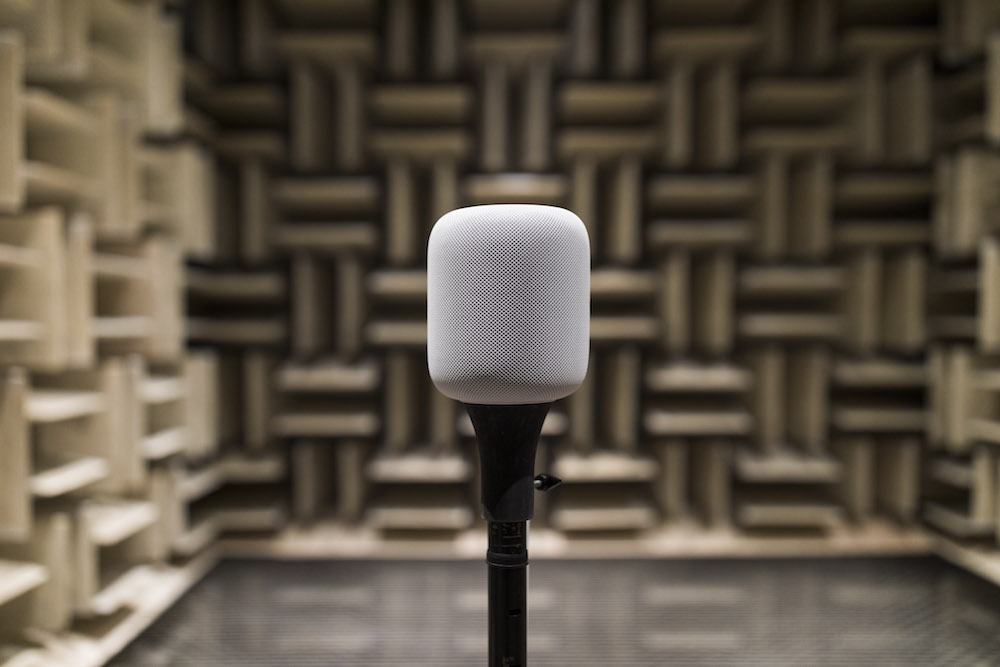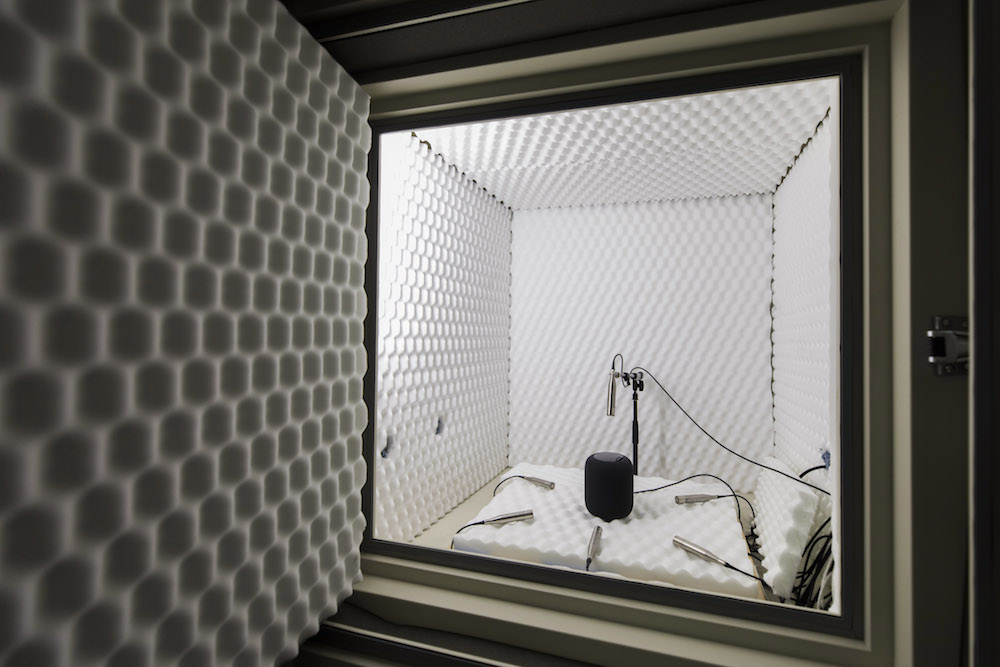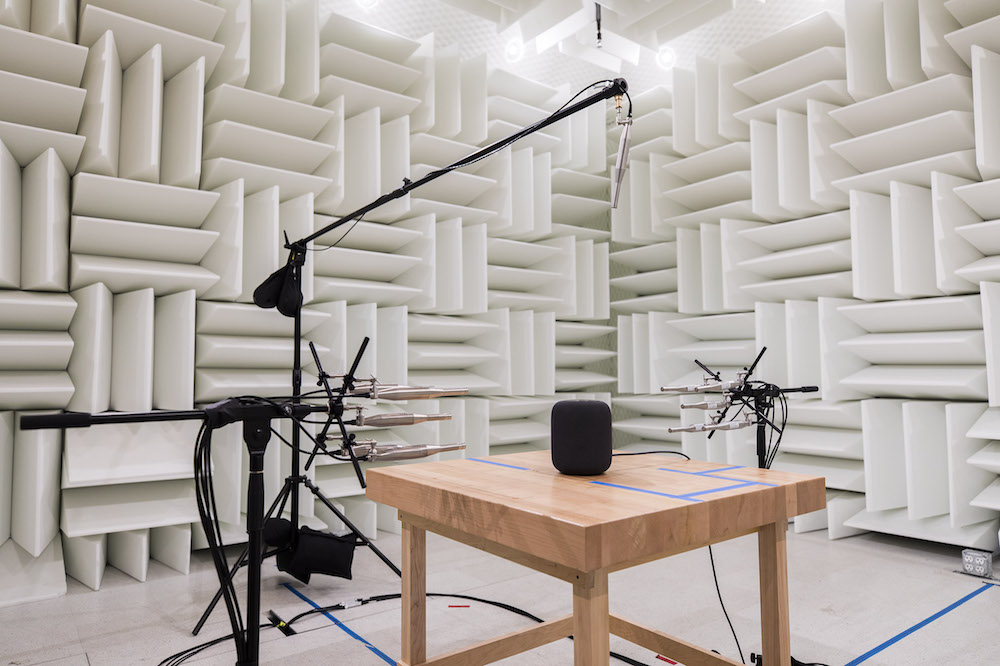
Apple ahead of HomePod’s schedule arrival this Friday gave select members of the press a nice tour of its dedicated audio laboratory in Cupertino, California where engineers tested the Siri-powered smart speaker’s sound capabilities.
Jim Dalrymple of The Loop published a trio of images depicting a trio of non-reflective, echo-free anechoic chambers used to develop the beam-forming speaker array and high excursion woofer in HomePod, test Siri’s voice detection algorithms in loud environments and more.
One is a room built within another room set on isolating springs that cancel out any vibrations from the outside, allowing Apple to test HomePod’s sound in all directions (HomePod adapts itself to the environments it’s placed in).

Another extremely quiet lab was used to detect unwanted noises during HomePod development. Sitting on 28 tons of concrete, it sports panels that are one foot thick (another 27 tons of material) and 80 isolating mounts between the room and the concrete slab it sits on.
“The chamber is designed to be -2 dBA, which is lower than the threshold of human hearing,” the author wrote. “This basically provides complete silence.” Dalrymple also saw yet another chamber designed to listen specifically for electronic noise.
Kate Bergeron, Apple’s Vice President of Hardware Engineering, said the HomePod project started six years ago. “HomePod started by us asking a question: What would it mean if we decided to design a loud speaker where we could put it in any room, and that room wouldn’t affect the sound quality,” said Bergeron.
Gary Geaves, Apple’s Senior Director, Audio Design and Engineering, said:
We think we’ve built up the biggest acoustics and audio team on the planet. We’ve drawn on many of the elite audio brands and universities to build a team that’s fantastic. The reason we wanted to build that team was certainly for HomePod, but to also to double-down on audio across all of Apple’s products.
Apple has built up “the biggest acoustics and audio team on the planet,” Geaves added. The Cupertino company hired top engineers from the elite audio brands and universities for its audio team. Dalrymple has learned that every HomePod component was designed by Apple, including the fabric mesh that covers the speaker and is acoustically transparent.

This isn’t the first time Apple has offered a private tour of its labs.
Back in the Antennagate days, they invited journalists for a tour of the anechoic chambers where they conducted testing of the handset’s cellular signal reception and call quality. The same audio lab is used for testing of audio capabilities for all Apple products.
“This impacts all of the products, it’s not just about HomePod,” Apple’s marketing boss Phil Schiller told The Loop. “It’s about speakers in iPhone, the quad speakers in iPad, what we put into Macs, microphone pick up, AirPods and Siri and Apple TV. All of those products at one point in the development cycle came through here.”
The facility is one of the largest anechoic chambers in the United States.